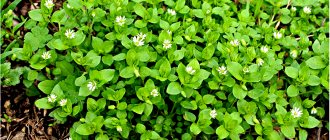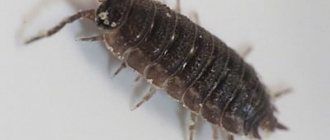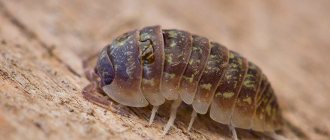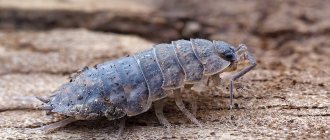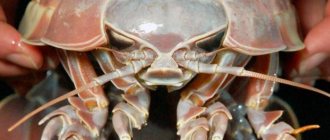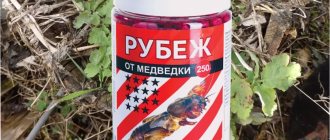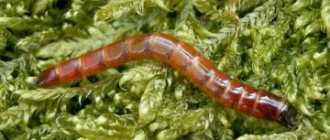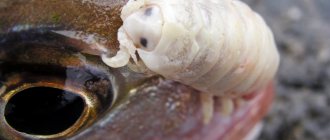Features of the pest
Features of woodlice:
- The root system is weak and fragile, so the weed is easily pulled out along with the roots.
- Woodlice has elastic shoots and small egg-shaped leaves with a pointed tip.
- Stems up to 15-30 cm long, highly branched, cylindrical in shape.
- During the flowering period, woodlice is covered with small white flowers resembling stars.
- The weed is distinguished by its extremely rapid spread, since up to 10-15 thousand seeds ripen on one plant.
Before getting rid of woodlice in the beds, you need to remember that this plant is known for its ability to grow very quickly - this leads to rapid drying out and even death of cultivated plantings, which are forced to “share” nutrients and moisture. The roots of the weed impoverish the soil, and its thickets create favorable conditions for the growth of bacteria.
How to get rid of woodlice in garden beds - effective ways
Woodlice grows actively throughout the spring-summer season; this plant does not have a dormant period.
Therefore, the fight against the weed must begin immediately after its appearance, otherwise the woodlice will very quickly turn the garden plot into a dense overgrown “carpet”. There are several effective ways to get rid of woodlice in the country :
- The simplest one is deoxidizing the soil before planting the main crops in the garden.
- Mechanical weed removal by hand or using a Fokin flat cutter.
- The use of folk and chemical means for treating woodlice during the active growing season.
The best results come from an integrated approach - by combining several methods of control, you can quickly get rid of woodlice in the beds.
Mechanical way of fighting
One of the most effective ways to get rid of woodlice in beds is mechanical treatment of the area.
This includes regular weeding and loosening of the area. An important role is played by sowing green manure and mulching the soil. How to remove woodlice from the garden :
- After harvesting, the area needs to be dug up, cleared of plant debris and sowed with mustard, phacelia or other green manure. They prevent the growth of weeds and improve the composition and structure of the soil.
- When weeding the beds, you should try to pull out the woodlice by the roots.
- It is more convenient to dig up heavily overgrown bushes in a bunch, together with a lump of earth. You can also use a flat cutter to remove the top layer of soil.
- The places where woodlice grow must be loosened regularly - due to this, the remaining weed seeds will be buried in the soil and will not be able to germinate.
- In case of extensive weed infestation, the beds should be carefully dug up at least twice per season, in spring and autumn.
To remove woodlice in the garden, you can use a flat hoe, trying to go a few centimeters into the ground in order to cut off the growing point and prevent the weed from re-germinating.
Mown woodlice cannot be piled on the site - due to its unique vitality, the weed will definitely take root and germinate again. It is advisable to lay it out only on plastic film.
Mulching the area
Weeding, digging or loosening the soil must be completed with mulching.
Almost anything can be used as mulch :
- trunk circles of trees and shrubs, planting holes - dandelions, nettles and other plants, humus, compost;
- row spacing area – sawdust, straw, cut grass;
- the area between the vegetable beds - sawdust (fresh or rotted), chopped cardboard, crushed stone, pebbles.
When using sawdust, you need to take into account that it reduces the amount of nitrogen in the soil and increases its acidity. To prevent this, sawdust can be mixed with dolomite flour.
Soil deoxidation
In order for the fight against an annoying weed to be effective, you need to take into account what kind of soil the woodlice likes.
This plant “prefers” soil with high acidity, so one of the most effective ways to kill the weed is to deoxidize it. Ways to reduce soil acidity :
- dolomite flour – 350-450 g per 1 sq. m;
- lime – 450-500 g per 1 sq. m, applied in autumn;
- ash - can be applied in the spring, sprinkling the area in unlimited quantities.
Sowing green manure crops well reduces soil acidity - this can be mustard, oats, rye. Green manure can be sown immediately after the autumn harvest.
Folk and chemical remedies
The most effective way to get rid of woodlice grass in a greenhouse or in an open area is to use folk remedies that are safe for the soil, fertile soil and future harvest.
Mulching
Carry out after each weeding and loosening. For these purposes, everything is suitable except chickweed itself or other weeds with seeds.
Reducing soil acidity
By deoxidizing the soil to a neutral level, exhausting weeding is avoided. Chalk, dolomite flour or slaked lime are used. Funds are contributed before winter or early spring. However, not all cultivated plants like slightly acidic soil.
Chemicals
Used in cases when other techniques do not help.
Drugs
:
1. Roundat.
Suitable for annual chickweed. Dissolve 60 ml of the product in a bucket and treat the weeds. The procedure is carried out early in the morning or in the evening, since the daytime high temperature neutralizes the effects of the drug.
2. Hurricane Forte
. A 3-liter bottle contains 15–20 ml of herbicide. The grass is treated once in calm weather.
3. Tornado.
For 3 liters of liquid – 25 ml of product. The composition is prepared before use.
4. Chistopol
. For a 3-liter bottle - 15 ml of herbicide. The solution is used in dry, warm weather.
In addition to chemistry, folk remedies are used that will not harm garden crops and gardeners.
Description of woodlice
The weed has several names, although the popular definition of “woodlice” fully corresponds to its essence. This is due to the plant’s commitment to shaded areas of soil with good moisture. If the soil is also fertile, then in the warm months the woodlice reproduces very actively. The weed is famous for its vitality and high degree of adaptability. Cultivated species cannot withstand competition and are often quickly suppressed by their harmful neighbor. The thin, highly branched stems of the weed retain moisture (dew) well, which is why the plant received such an interesting name. This ability also allows the grass to survive dry periods.
Scientists classify the chickweed grass as a member of the clove family and define it as “average chickweed” or Stelláriamédia. This is an annual herbaceous plant with small flowers resembling stars in outline.
It blooms in spring and summer, usually from May to the end of August. Seeds are formed in boxes. They can be either kidney-shaped or round in shape. Like any weed, woodlice produces a lot of seeds. Up to 15 thousand of them can ripen on one plant. The seeds retain their viability for 5 years.
Woodlice reproduces vegetatively. Any part of the stem takes root and forms a new plant.
Characteristics of the weed that describe its features:
- Seeds germinate when the temperature rises to + 3 °C. Therefore, already in early spring you can find green woodlice shoots at different ends of the site.
- The weed has a long growing season; woodlice retains green shoots until the first frost.
- Nodules form on the growing stems, which take root very easily and allow the plant to quickly conquer new areas.
- The ephemeral develops within a month, then dies. At this time, still living nodules or fallen seeds become new plants. The productivity of the weed is very high. Woodlice does not have a rest period.
There is another popular name for the weed - bird's lettuce. Feathered pets eat chickweed with great pleasure. This suggests that the plant contains many useful components.
Why is woodlice harmful?
The list of beneficial properties is not an indication for growing woodlice weed in plots. In addition to its benefits, chickweed causes a lot of harm to cultivated species. According to its properties, the plant is classified as a weed.
Woodlice causes considerable harm:
- Covering the ground with a thick blanket prevents the passage of light and air.
- In areas occupied by woodlice, pathogenic microorganisms develop, which contribute to the spread of diseases.
- In the density of the weed cover, garden and vegetable pests multiply.
- The branched root system of woodlice prevents the roots of cultivated plants from absorbing nutrients from the soil.
In addition, garden species lack moisture and sun.
Beneficial features
Woodlice cannot be considered only a weed. In addition to harm to growing crops, chickweed has a lot of beneficial properties that allow the creeping shoots to be used for medicinal purposes.
Woodlice contains:
- Vitamin C. It is involved in the synthesis of collagen, which is the basis of joint tissue and cartilage. Its presence in the body normalizes metabolic processes, improves the body's resistance to viruses, helps the work of leukocytes, and stimulates nervous processes in the cerebral cortex.
- Vitamin E. An indispensable antioxidant component that activates the growth and development of the human body. Especially necessary for children and expectant mothers. Promotes the normal course of pregnancy, serves as a prophylactic for protection against ischemia and cancer. Very important for strengthening immunity, healthy skin and maintaining physical activity.
- Vitamin K. Without this element, the formation of pulmonary and cardiac tissue is disrupted, and blood clotting is impaired.
- Carotene. Participates in the functioning of the cardiovascular system, normalizes cerebral circulation. Performs an antioxidant function, participates in the removal of harmful substances and toxins from the body.
In addition to the listed components, woodlice is rich in micro- and macroelements, minerals, essential oils, wax, tannins, and flavonoids. Such an extensive list of useful substances makes it possible to use the weed for various disorders in the body.
Important! Only the shoots have medicinal properties.
Preparations made from woodlice stems are used for:
- metabolic disorders;
- diagnosed arthrosis;
- weakened immune system;
- cleansing procedures from waste and toxins;
- prevention of ischemia, cancer problems;
- disorders of cerebral circulation and blood pressure readings;
- gynecological problems.
The weed is used in the form of infusions, decoctions, and compresses.
More information about the beneficial qualities of woodlice:
Woodlice weed control
It’s not just beginners who want to learn about weed control methods. Even experienced farmers are interested in new methods of getting rid of woodlice from their plots. This is due to the fact that it is almost impossible to completely remove the weed. And even if it works, it’s temporary. From any small remnant of shoot or seed, the weed is reborn again. In this case, environmental conditions are not important. There are several options for action that help get rid of woodlice weed in gardens and vegetable gardens.
Mechanical method
Methods of mechanical influence refer to agrotechnical measures. The most effective in the fight against woodlice:
- Using mechanical tools to eradicate weeds. If you fight manually, this method is suitable for very young plants that do not have a formed root system. But even in this case, it is better to loosen the ground with a rake in order to destroy the emerging woodlice shoots. Small white roots break off easily.
- Using a flat cutter to remove a thin layer of soil using a shovel or sharp hoe. It is important to cut off the growing point to stop further development of the weed.
- Timely loosening, digging, plowing of areas. These actions do not give the woodlice the opportunity to grow and form a powerful root. It is best to dig up the soil with a pitchfork several times, simultaneously selecting all parts of the weed.
Soil deoxidation
Another effective way to free a site from weeds is to deoxidize the soil. As acidity decreases, woodlice control becomes more successful. You should first determine the degree of acidity of the soil on the site so as not to make a mistake.
For those who do not have the opportunity to use technical means, plants will help:
- Tricolor violet, wild mint, and horsetail are indicators of high acidity.
- Chamomile, coltsfoot, clover, and dandelion love slightly acidic soil.
- Quinoa and nettle are lovers of neutral soil.
Wild plants will certainly guide the farmer when determining the degree of acidity. Deoxidation is a preventive technique that allows you to reduce the number of weeds on the site. It must be repeated every year.
Prevention of woodlice
The main preventative work to combat the weed begins in the spring. Woodlice stands out well with its bright green appearance among other plants that have not yet recovered from winter.
- It is good to loosen the area with a rake. This will help disrupt the weed's root system and prevent it from rising. It is important to do this immediately after the onset of heat.
- Be sure to remove the entire plant, and not just remove the above-ground part.
- Use proper and sharp garden tools – hoe, flat cutter, extractor.
- Destroy all parts of the weed without exception. The high reproductive capacity of woodlice will allow the weed to be reborn even from small pieces of shoots or roots.
- In the fall, dig up the areas where the weed was located. This needs to be done using a pitchfork and several times. Be sure to destroy all woodlice remnants.
These methods are not difficult, especially in small areas. If you use them regularly, the amount of weed will be significantly reduced. You can also regularly prepare medicinal decoctions and teas from woodlice so that the weed population does not increase.
Use of chemicals
Depending on the area occupied by weeds and the proximity to other plants, it is sometimes convenient to use herbicides, for example, Tornado, Hurricane.
Plants 5-10 cm tall are subject to treatment. If the area is large, then spray with a solution of 120 ml of the drug and 5 liters of water, but if there are single plants or there is a fear of damaging neighboring crops, then the treatment can be carried out using a brush.
All work with chemicals must be carried out with gloves and special clothing.
Reference!
Herbicides have a detrimental effect not only on weeds, but also on other plants and have no effect on seeds in the soil.

